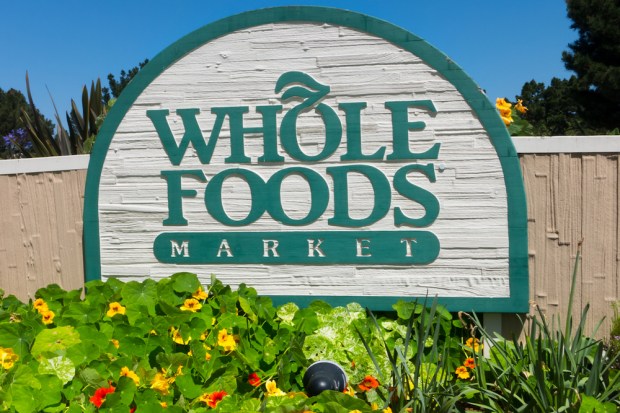Ripple Effects: From Discount Sausages To Kobe Steak

Finally, gas prices are down, an insecure Chinese economy has caused the dollar to gain strength and U.S. consumers are paying less for food at the supermarket than they have in years. But while the payments industry is enjoying the uptick in checkout transactions’ pace and volume, farmers and the agriculture industry is struggling. Could the ripple effects of food deflation signal a sea change for intensive farming?
As consumers are enjoying lower supermarket food prices — The Wall Street Journal reported that the price of a gallon of milk had dropped 11 percent in July compared to a year ago, and the price of a dozen large eggs had fallen 40 percent in the same period – farmers are coping with a global surplus of milk, meat and grains.
Agri-Mark, a 1,200-dairy cooperative in New England, was pouring excess milk last month into holes, according to Bloomberg. Global production of milk will increase by 2.1 percent to a record 582.52 million tons this year as the EU ends limits on diary production and New Zealand sells more than ever. Global dairy prices have dropped by almost 40 percent from an all-time high in Feb. 2014 and are lower than they’ve been in five years, according to UN data.
The ripple effects of food deflation, according to WSJ, mean less revenue for farmers and ranchers from raw milk, cheese and cattle, forcing them to slash spending. Tractor suppliers are cutting production in response to the farming slump.
What’s causing the drop in food prices? According to U.S. News & World Report, the U.S. dollar index, which compares the dollar’s value to a basket of world currencies, was up 9 percent in 2015, and analysts expect it to stay strong through 2016. Uncertainty in the Chinese economy has encouraged investors to consider the dollar a better investment than other currencies. The IMF predicts the U.S. economy to have grown by 2.6 percent last year compared to Europe at 1.5 percent and Japan at 0.6 percent.
The strong dollar means that U.S. products and commodities are more expensive for other countries and exports go down. Unless fewer commodities and products are produced, there is greater supply, as is the case with food. And the excess supply is compounded by the fact that U.S. farmers are producing more food than ever from intensive farming practices encouraged by cheap, subsidized corn, genetically modified crops and yield-boosting hormones for milk production.
Something has to change for the agriculture industry, and consumers might be indicating the right direction to take.
An article on LinkedIn discussed the unpredictable and changing Chinese consumer and the advance of China’s urban middle-class families with increasing disposable income. The Chinese consumer is “more emotional, aspirational and free-spending … [and] behave[s] similarly to consumers in developed markets … When Chinese consumers change their minds about something, it ripples outward into the global economy. And this phenomenon is going to get a lot more noticeable in the next few years.”
And consumers in the U.S. are no less fickle or unpredictable with their food choices.
Although the news for agriculture seems dire right now, some segments of the agriculture industry are listening to consumers and experiencing growth. Yes, consumers are happily swiping and dipping at the checkout for their low-cost groceries, but they are also becoming more health-conscious. And they don’t just want cheap food; they want cheap, healthy food.
Industry experts suggest that smaller-scale, grass-fed beef has grown between 25 and 30 percent annually over the past decade, according to AgWeb. More concretely, three-quarters of health-conscious consumers are buying grass-fed meat or dairy products, and three-quarters prefer locally sourced food.
According to Refrigerated & Frozen Foods, the 2016 Market LOHAS MamboTrack consumer research survey found that health- and eco-minded consumers are prepared to pay more for organic, non-GMO and grass-fed food. Eighty percent of those surveyed would like food to be labeled as USDA organic and non-GMO, and the presence of antibiotics and pesticides in food tops consumers’ concerns.
Could the ripple effects of the current food deflation be the catalyst for change in the agriculture industry, as farmers are forced to adjust their practices to meet the demands of the consumer?
So, let’s pause for a minute. China’s economy has strengthened the dollar, which is reducing the cost of food in supermarkets for U.S. consumers. Cheaper food and ingredients are causing more people to eat at home, but those consumers want to eat locally sourced, healthier food. Fewer commodity exports mean that large-scale farmers may be forced to sell off livestock or land or even cease production altogether unless they find a means to diversify, such as growing organic, non-GM crops or raising grass-fed stock.
If trends continue and consumers continue to demand better quality and healthier food, there might be a ripple effect from China’s failing economy that is one to write home about. The return to a time where food is bought locally, people cook at home and livestock graze.
I’ll have a grass-fed Kobe filet, please — rare.
